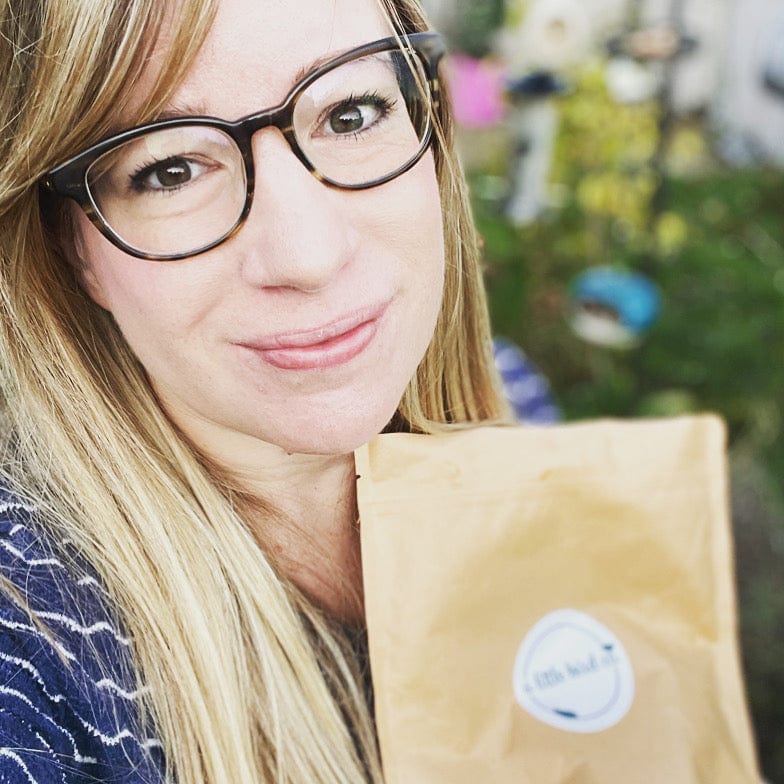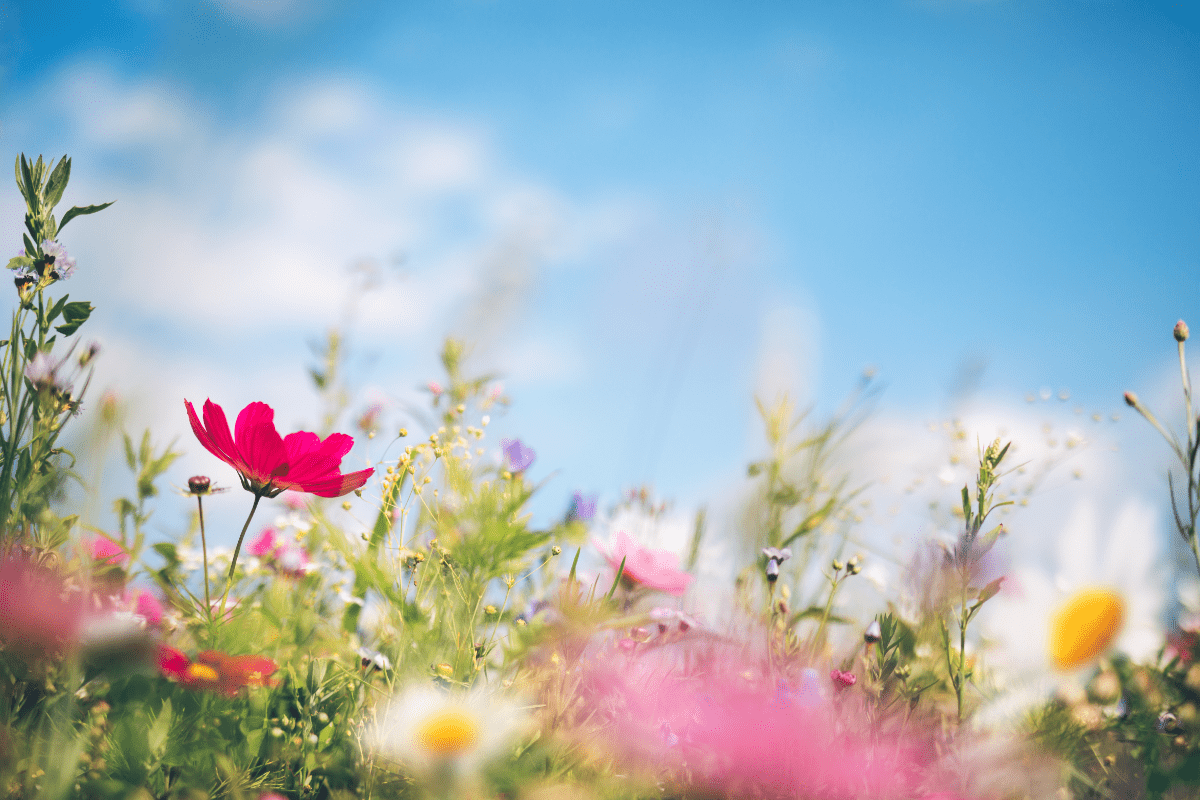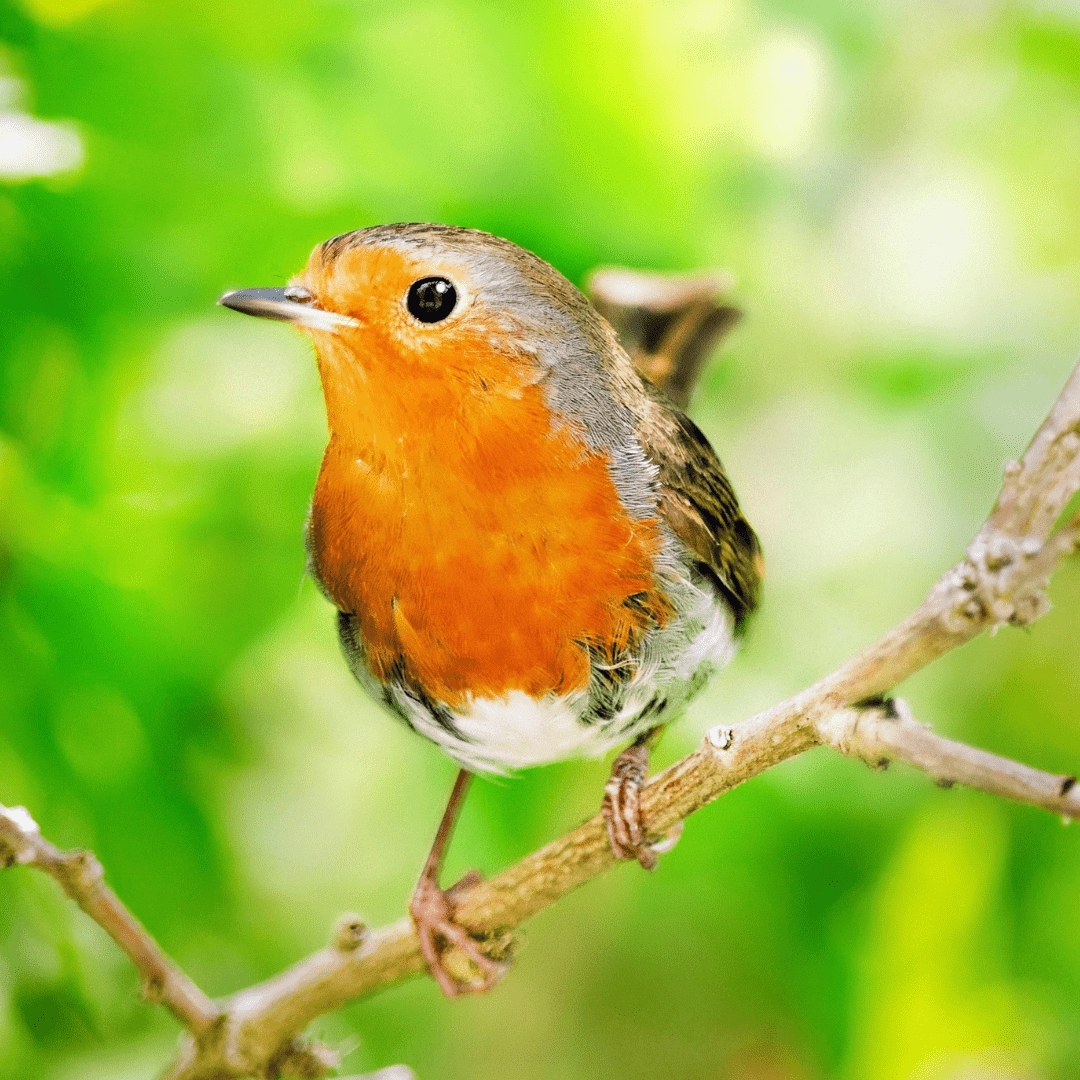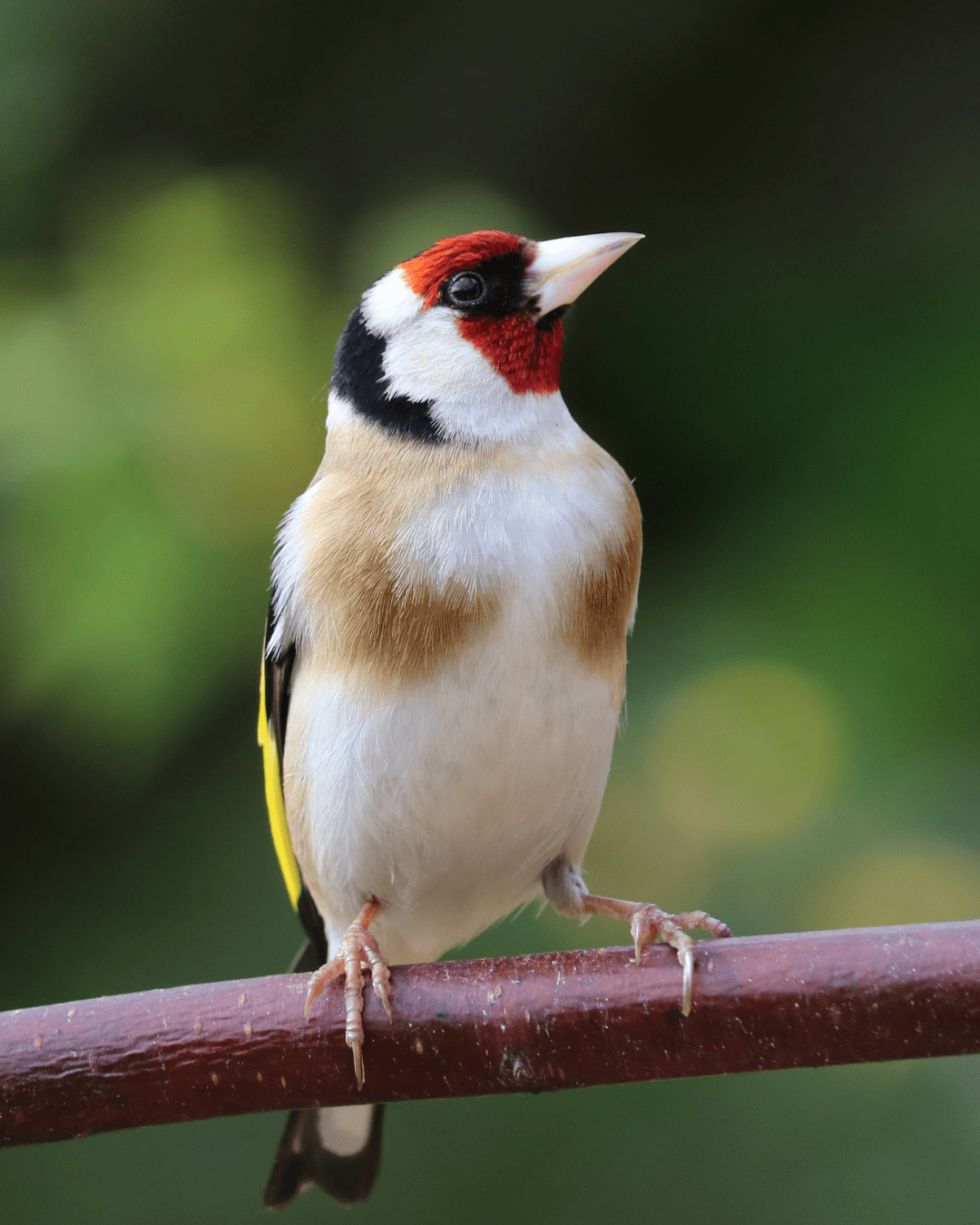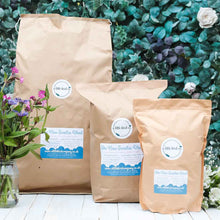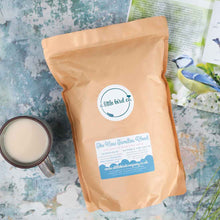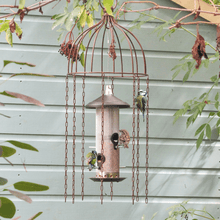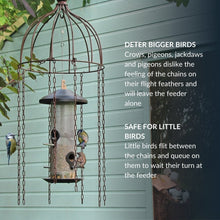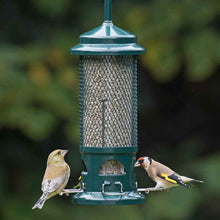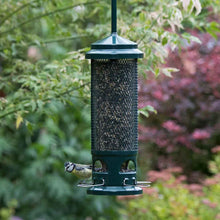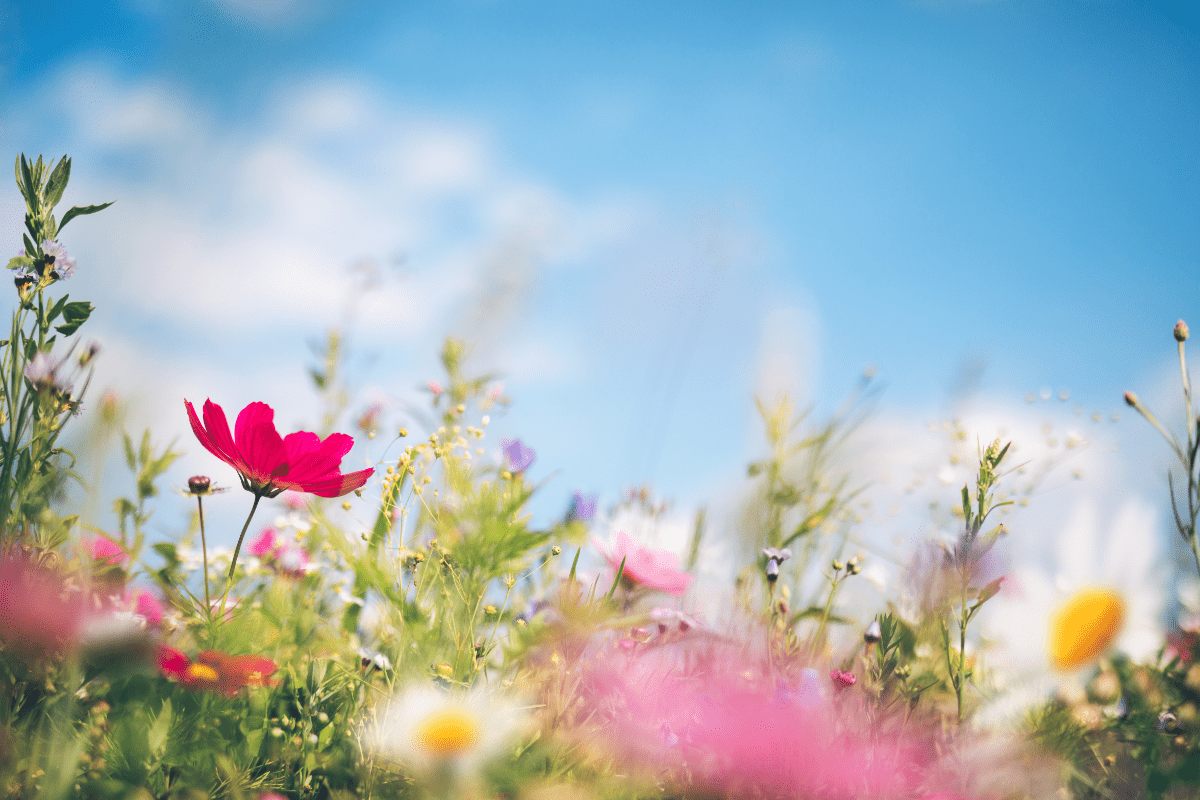A yearful of birds: Your garden birds throughout the seasons
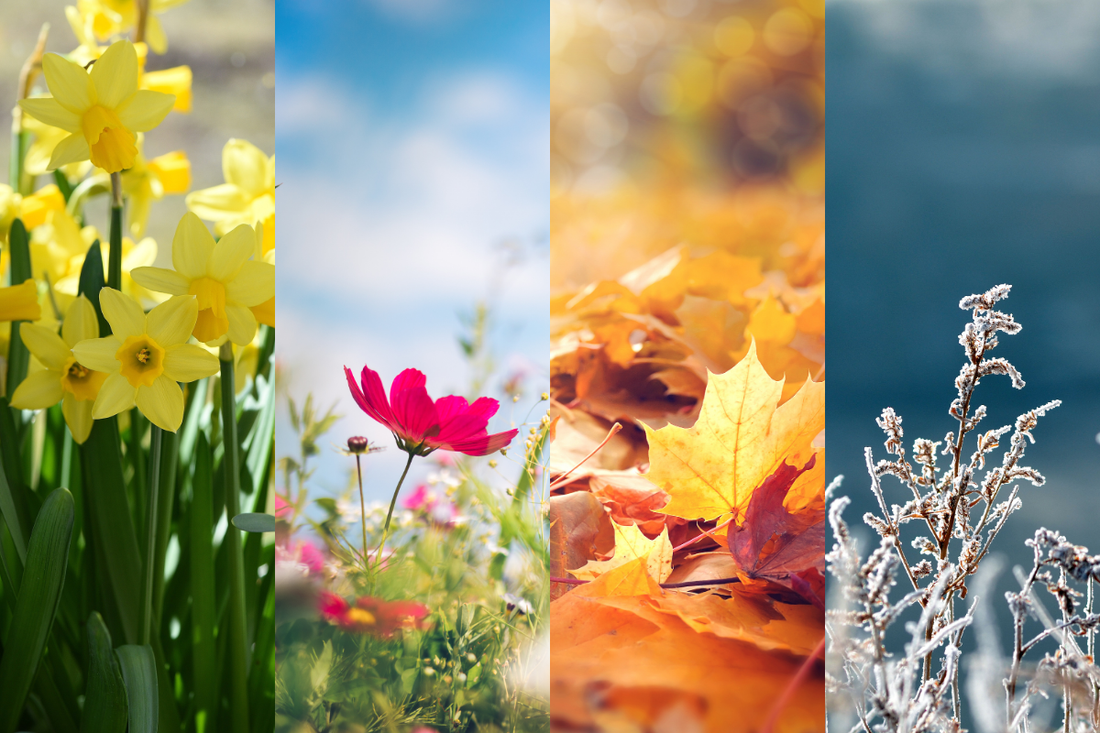
Your garden is such an important place for the birds. When you provide food, shelter, and nesting sites throughout the year, you make it more likely that your garden birds will thrive and go on to have successful, healthy broods.
I believe that the more we know about our garden birds, the more connected we're likely to feel and the more we'll support their conservation. Whether you have a small urban garden or sprawling countryside grounds, the changing seasons bring fascinating shifts in bird behaviour. From the energetic nest-building of spring to the quiet resilience of winter, every month offers something new to learn. Understanding these seasonal patterns can help us support our songbirds with the right food, shelter, and conservation efforts.
Spring: The Nesting Season Begins
As the days grow longer and temperatures rise, birds prepare for the busy breeding season. Spring is my favourite time of year - a season of courtship, nest-building, and raising young, with each species following its own rhythm. During this time, birds need food they can grab quickly from the feeder. If they have to spend too long picking through ingredients to find what they need, they waste valuable energy.
When do birds start nesting?
Different birds start nesting at different times, though March and April are the peak months. Blue tits and great tits begin scouting for nest sites in early spring, laying their eggs in April or May. Blackbirds and robins may raise two or even three broods, with the first nests appearing in March. Male wrens are responsible for building multiple nests, and the female selects the final one to decorate and finish before they move in to start their new family. House sparrows, which nest communally, continue breeding from March through to late summer.
How do birds build their nests?
Each bird species has its own nest-building strategy. Blue tits weave moss, feathers, hair, and wool into snug cavities or nest boxes. Blackbirds construct sturdy, cup-shaped nests from grass, twigs, and mud, tucking them into hedges or trees. Robins choose more secretive spots, hiding their nests inside wall crevices, sheds, or even plant pots.
One of the most fascinating nest builders in British gardens is the long-tailed tit. These tiny, sociable birds construct elaborate, domed nests made from moss, spider silk, and feathers, which allows the structure to stretch as the chicks grow. The nests are lined with hundreds of feathers for insulation, creating one of the cosiest homes in the bird world. What makes long-tailed tits even more amazing is their altruistic behaviour—if a pair loses their nest, they often help close relatives by feeding their chicks, improving the survival rate of the extended family. Because of their intricate construction, long-tailed tit nests have a relatively low success rate, as their exposed locations in hedgerows make them vulnerable to predators. However, their cooperative breeding behaviour helps balance this risk, ensuring some chicks make it through to adulthood.
Which garden birds mate for life?
Most garden birds form seasonal bonds, choosing new partners each year, but some species stick together longer. House sparrows and great tits often pair up for multiple breeding seasons. Robins, blackbirds, and blue tits tend to change mates more frequently.
Dunnocks have a fascinating and flexible mating system. While they’re often considered monogamous, females may mate with multiple males, and males may attempt to guard and mate with several females. This leads to a form of "mate guarding," where males protect their mates from rivals while still helping to raise the young of different females. Interestingly, a male dunnock may end up raising chicks that aren’t his own. Despite not knowing the paternity of the chicks, he still invests time and energy in feeding and protecting them.
How do birds know when to nest?
Timing is crucial in the bird world. Blue tits, for example, carefully time their egg-laying to coincide with the emergence of oak tree caterpillars, which, in turn, align their arrival with the budding of leaves. These protein-rich insects are essential for feeding growing chicks. However, if birds miscalculate the timing, their young may struggle to find enough food. With the impact of global warming, these natural cycles are becoming increasingly disrupted, making it harder for birds to synchronise their breeding with the availability of food, putting pressure on their survival.
Which birds use nest boxes?
Many garden favourites, including blue tits, great tits, house sparrows, and robins, readily use nest boxes, especially if they feel safe and comfortable. To encourage birds to use your nest box, position it facing northeast to avoid overheating from the afternoon sun. Keep the box away from predators like cats, squirrels, and large birds by placing it in a quiet, sheltered area—ideally high up, on a tree or wall. Additionally, make sure the area around the box is calm and undisturbed, as birds prefer quiet spaces where they feel safe from human activity and other disturbances.
Providing a reliable food source and fresh water nearby can also attract birds to your garden. Birds need energy to raise their young, so offering high-quality food like sunflower hearts, suet, or mealworms can be helpful. Fresh, clean water is equally important, especially in the warmer months, as it helps with hydration and keeps them cool. A safe, secure environment where they can find these essential resources will make your garden a welcoming place for nesting birds.
Can I put two nest boxes in one garden?
Yes, you can definitely put two nest boxes in one garden, but it's important to place them quite a long way apart to reduce territorial behaviour. Many species, like blue tits and great tits, can be quite protective of their nests, so placing boxes at least 10-15 metres apart (or more, depending on the species) helps prevent conflicts. By spacing the boxes out, you give each pair a better chance to settle in without being disturbed by rivals.
Do birds ever lay eggs in other birds’ nests?
Cuckoos are infamous for laying their eggs in the nests of other birds, tricking them into raising their young. This is known as "brood parasitism." Once the cuckoo chick hatches, it may push out the host bird’s own eggs or chicks, ensuring it gets all the food and attention. This strategy allows cuckoos to save time and energy by avoiding the effort of raising their young, instead laying eggs in multiple nests to increase their chances of survival.
Dunnocks and robins are often victims of this clever tactic. The female dunnock, for example, may unknowingly care for a cuckoo chick alongside her own. Even though the male dunnock may not realise the chick isn't his, he still helps raise it. Despite the parasitic nature of cuckoos, some host species have evolved ways to combat this, like recognising and ejecting cuckoo eggs. Still, the cuckoo’s sneaky strategy continues to be a fascinating example of survival in the bird world.
What happens if a bird’s nest fails?
Nature is full of challenges, and many birds will build a new nest and try again if a clutch is lost to predators, bad weather, or other disruptions. Blackbirds and robins are especially persistent breeders. You can help protect nesting birds by keeping feeders away from dense cover where cats can hide, avoiding trimming hedges during nesting season, and offering secure nesting spots like bird boxes placed out of reach of predators.
Why are birds suddenly singing more loudly in the mornings?
The dawn chorus reaches its peak in spring, with males singing to defend their territory and attract mates. The singing follows a set pattern, starting with robins and blackbirds, then song thrushes, wrens, and finches. Sound carries further in the still morning air, making it an ideal time to call.
Birdsong is different from calls - songs are longer and more complex, used for mating and territory marking, while calls are shorter and used for communication. Some birds, like robins, sing year-round, while others only vocalise in spring and summer. Young birds learn their songs by listening to adults, and the loudest singers include wrens (surprisingly loud for their size!), blackbirds, and song thrushes. If you’re just starting to recognise birdsong, listen for the robin first - its sweet, warbling tune is one of the easiest to identify. Once you’ve tuned into that, you’ll start picking out other voices in the chorus. I use the Merlin app to help me recognise birdsong.
You can read more about our Nesting Blend, designed to support the birds at this time of year, in this blog post.
Summer: Feeding Young and Fledging
Once chicks have hatched, their parents work tirelessly to keep them fed. This is a time of rapid growth and learning for young birds.
What should (and shouldn’t) fledgling birds eat?
Parent birds primarily feed their chicks insects, caterpillars, and other protein-rich foods. If you’re feeding garden birds, avoid whole peanuts and bread, which can be dangerous for young birds. It is also important to stop feeding dried mealworms in the summer, as they can be too dry and difficult for young birds to digest.
Can I put out bread for my garden birds?
Spring and early summer is when we all tend to notice the birds a bit more, and you might feel inspired to feed them. While my seasonal bird food is the best option, there are a few kitchen ingredients you can offer while you wait for your order to arrive. You can offer your garden birds unsalted peanuts, sunflower seeds, oats, and mild grated cheese. You can also offer small pieces of apple, pear, or berries—just make sure to remove any seeds from the fruit first. If you have leftover rice or pasta, those are good to add to their diet, too. However, some kitchen staples should be avoided, such as bread (which offers little nutritional value), chocolate (toxic to birds), salty or sugary foods, and anything that’s been seasoned or cooked with oils, butter, or sauces. Additionally, never give birds anything that could be a choking hazard, like large chunks of fruit or whole nuts without being crushed first.
Should you feed birds in summer?
Feeding birds all year round is important because many of the natural food sources birds relied on in the past are no longer as readily available. According to the BTO and RSPB, modern changes to land use, such as urbanisation and intensive farming, have reduced the abundance of insects, seeds, and fruits that birds would typically forage for throughout the year. In particular, habitat loss and changes in farming practices have led to a decline in the variety of plants and insects that birds need, especially during crucial times like the breeding season. By supplementing their diet with bird food year-round, we can help support their health, survival, and reproduction, ensuring they thrive even when their natural resources are limited.
Learn more about our New Families Blend, designed to support the birds during the summer months, in this blog post.
Autumn: The Annual Moult and Preparing for Winter
As summer ends, birds undergo a dramatic transformation, replacing old feathers in preparation for colder months. Your garden might well feel quieter than usual as the birds lose their feathers, making them less agile in the air and more susceptible to predators. Just because they're not so visible, it doesn't mean that they don't need our help. Offering foods that are quick to take from the feeder becomes a lifeline for the birds at this time of year.
Do birds moult their feathers?
Feathers wear down over time due to constant use, exposure to the elements, and the friction that comes with daily activities like flying, preening, and moving through dense vegetation. As a bird’s feathers age, they become worn, faded, and less effective, which is why moulting is so important. Moulting is the process of shedding old feathers and growing new ones, ensuring the bird maintains its ability to fly, stay insulated, and attract mates with vibrant plumage. Not all birds moult in the same way, but all birds do moult to some extent. Some species undergo a complete moult, shedding all their feathers at once, while others may lose feathers gradually. The timing and extent of moulting depend on the bird species and their environment, but it’s typically an energy-intensive process. During this time, birds tend to become quieter and more secretive, as they focus their energy on growing fresh feathers and recovering from the physical demands of moulting.
Why is my garden so quiet in autumn?
As the busy spring and summer months wind down, and the breeding season concludes, birds begin to shift their focus to the essential task of moulting. During this time, their feathers wear out from the demands of flight, foraging, and the elements, so they need to replace them to ensure their plumage is in top condition for the coming months. This process can be energy-intensive, and as a result, many birds become quieter and less visible. With less singing and reduced activity, it may seem like the birds have disappeared entirely, especially when compared to the lively and noisy atmosphere of spring and summer, when their breeding efforts keep them active and vocal. However, just because they are less visible doesn’t mean they aren’t around. In fact, many birds are still present but just more discreet, focusing on conserving energy and maintaining their health.
This quieter period of autumn also marks the time when some species begin to gather in larger flocks, a behavioural shift that’s often linked to the shortening daylight and cooling temperatures. Flocking can provide extra protection from predators, as there’s safety in numbers, and it allows birds to share feeding areas more effectively. These groups can be seen forming in fields, along hedgerows, or in urban areas, where they forage together in preparation for the harsher winter months. While the individual bird may be harder to spot as it hides while moulting, the collective presence of these flocks is still a sign of life all around us, even if the birds themselves seem to have retreated from their usual noisy and visible roles. The annual moult and this behavioural shift are part of the cycle that allows birds to survive and thrive through the changing seasons.
Do birds store food for winter?
Yes! Blue tits and great tits, for example, are known for their clever food-caching habits, which help them survive through the leaner winter months when food is harder to find. These little birds often hide seeds, insects, or other food items in the bark of trees or in small crevices within tree trunks and branches. By tucking away food in these hidden spots, they create a "pantry" of sorts that they can return to when supplies are low. It's a fascinating strategy that not only provides them with much-needed sustenance during colder months but also helps them to rely less on fleeting food sources, such as insects, which are much less abundant in winter.
Similarly, jays and nuthatches engage in their own food-hoarding behaviours, but with a particular focus on acorns and seeds. Jays, with their remarkable memory, will hide acorns in hundreds of locations, often burying them in the ground or in tree roots, knowing that they will need them later. These acorns serve as a valuable food resource throughout the winter months, and the jay's ability to remember where they've hidden them is crucial to their survival. Nuthatches, too, will hoard seeds and nuts, often tucking them into the bark of trees, wedging them into tight crevices where they can later retrieve them when food becomes scarce.
What makes these birds so interesting is not just their ability to cache food, but the variation in their methods. While blue tits and great tits may favour smaller crevices in bark or tree branches, jays and nuthatches tend to bury their food in more secure places. This hoarding behaviour is a survival tactic that allows these species to thrive even in harsher conditions when food is limited. In fact, this behaviour is so ingrained in their nature that some studies suggest jays can remember the locations of their caches for months, ensuring they can access their stores when needed the most. These food-storing habits are an impressive testament to the adaptability and resourcefulness of birds in the wild.
Our Fledglings and Feathers blend is perfect for early Autumn. Learn more about it in this blog post.
Winter: Surviving the Cold
As temperatures drop, birds rely on stored fat and high-energy foods to survive. They need our help most of all in winter, when natural food sources are less abundant and they are using more energy just to keep warm.
What do birds eat in winter?
In winter, birds rely on a range of natural food sources to survive, but these can be harder to find as colder temperatures make insects and plant matter less accessible. Insectivores like robins and wrens search under bark, leaf litter, and cracks in tree trunks for any remaining insects, while frugivores like blackbirds and thrushes depend on berries from shrubs such as hawthorn and rowan. Seeds from plants like thistles and grasses also become vital food sources for many species, and hardy nuts such as acorns are essential for birds like jays and woodpeckers. Aquatic birds, such as ducks and geese, rely on submerged plants, invertebrates, and algae from ponds and rivers, providing them with nutrients through the harsh winter months.
However, the decline in natural habitats, due to urbanisation and intensive farming, has made these food sources increasingly difficult to find. Many birds now face limited access to vital resources, making it even more important for us to manage our gardens in ways that can help support them. Leaving log piles, leaf piles, and seedheads in our gardens can provide essential cover and food, offering insects, seeds, and shelter for birds. By creating a more bird-friendly environment, such as leaving wild areas to grow or planting native shrubs that produce berries, we can help mitigate the effects of habitat loss and ensure that birds have the resources they need to survive the winter.
How do birds survive freezing temperatures?
Birds have developed a variety of clever strategies to survive freezing temperatures, with many focusing on conserving heat and finding shelter. One of their primary methods is fluffing up their feathers, which creates a layer of trapped air close to their bodies, acting as insulation. This helps birds retain warmth by reducing heat loss to the environment. Some species, like wrens and long-tailed tits, take this a step further by roosting together in small groups. By huddling up, they share body warmth and protect each other from the cold. This communal behaviour is particularly beneficial during the coldest nights when temperatures can plummet.
Blackbirds and robins often become more territorial during the winter months, fiercely defending food sources from rivals. By keeping control over their feeding area, they ensure a steady supply of food, which is crucial for maintaining their energy levels and staying warm. Birds also tend to seek out sheltered spots, such as dense foliage, hollow trees, or even man-made structures, where they can take refuge from the wind and snow. These areas provide protection from the elements and help birds conserve the energy they would otherwise use to keep warm. Some species, like the coal tit, even take to roosting in tree cavities, where they can avoid the worst of the cold.
How can you help garden birds in winter?
Supporting garden birds in winter is crucial for their survival, especially as natural food sources become scarce and the weather grows harsher. One of the most effective ways to help is by providing high-energy foods, such as suet, peanuts, and sunflower seeds, which are rich in fats and proteins. These foods give birds the calories they need to keep warm and maintain their energy levels during the cold months. You can also offer a variety of other bird-friendly options, such as fat balls, mealworms, or mixed seed blends, to cater to different species’ preferences.
In addition to providing nutritious food, it’s important to keep your bird feeders clean to prevent the spread of disease. Regularly washing the feeders and replacing the food ensures that birds are getting safe, fresh supplies. Another simple yet essential step is offering fresh water, as ice-covered puddles or streams are often inaccessible during winter. A birdbath with a heater or a shallow dish that you refill daily can provide a much-needed water source for drinking and bathing, helping birds stay hydrated and maintain their feathers.
Creating sheltered spots in your garden is also vital in helping birds cope with the cold. Dense hedges, shrubs, or trees can provide crucial cover from the wind and snow, allowing birds to find refuge when needed. Roosting pockets or specially designed birdhouses, which provide a warm, protected space, are another great addition to any garden. These roosting spots can be especially beneficial during particularly cold nights, giving birds a safe place to rest and conserve energy.
You can find out more about our Fall Into Winter blend of bird food, designed to support the birds in the cold winter months, in this blog post.
Through all seasons, our gardens provide a lifeline for birds, and with a little effort, we can support them year-round. Whether it’s putting up nest boxes, offering food, or simply enjoying their songs, watching birds through the changing seasons is one of the great joys of having a garden. Keep an eye out—you never know what you might see next!

